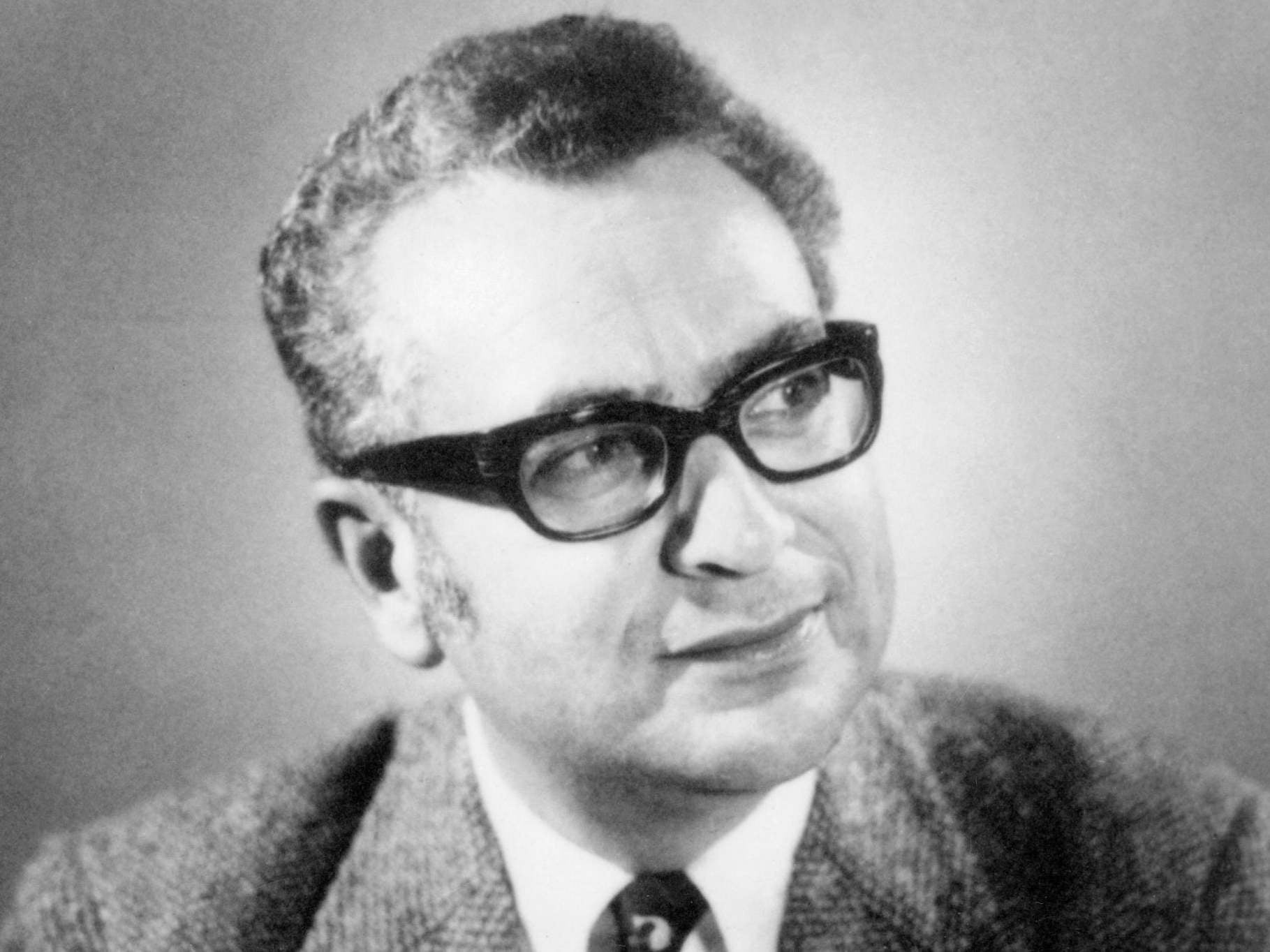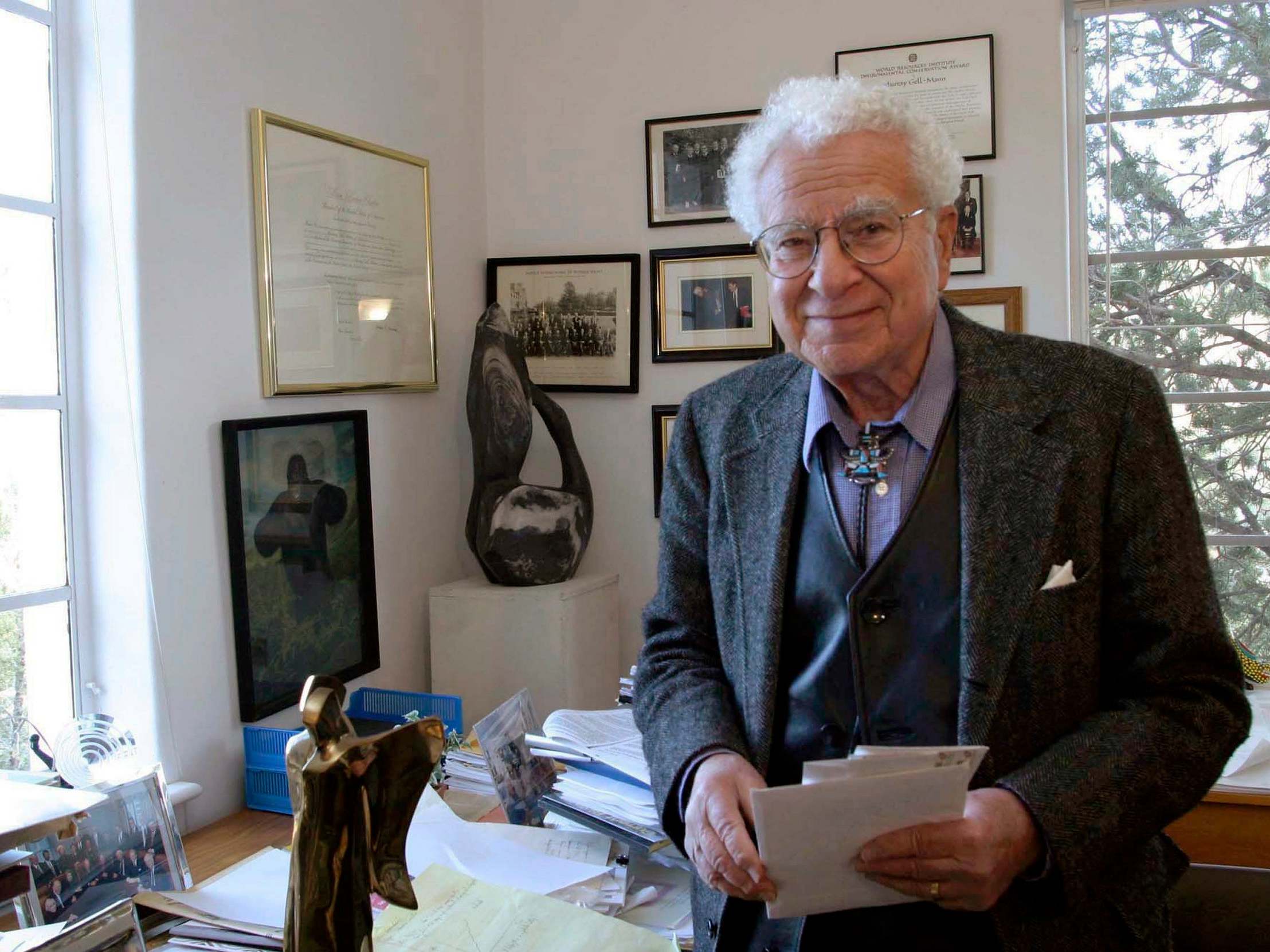Murray Gell-Mann: Nobel prize-winning scientist who identified quarks
He achieved distinction early in life and went on to make his mark as one of the great explorers of physics’ biggest questions

Your support helps us to tell the story
From reproductive rights to climate change to Big Tech, The Independent is on the ground when the story is developing. Whether it's investigating the financials of Elon Musk's pro-Trump PAC or producing our latest documentary, 'The A Word', which shines a light on the American women fighting for reproductive rights, we know how important it is to parse out the facts from the messaging.
At such a critical moment in US history, we need reporters on the ground. Your donation allows us to keep sending journalists to speak to both sides of the story.
The Independent is trusted by Americans across the entire political spectrum. And unlike many other quality news outlets, we choose not to lock Americans out of our reporting and analysis with paywalls. We believe quality journalism should be available to everyone, paid for by those who can afford it.
Your support makes all the difference.Murray Gell-Mann was barely 40 when he won the Nobel Prize in Physics 50 years ago. The American physicist, who has died aged 89, devised the “eightfold way” to bring order to the world of elementary particles. He also conceived the idea of “quarks” to explain the structure of such particles.
Gell-Mann ranks among significant contributors to the centuries-old effort to find the fundamental laws that governed the behaviour of the everyday world and the universe around us.
He was a pioneer in the development of what is called the standard model of particle physics, a guide to the fundamental behaviour of the constituents of the universe.
A child prodigy, Gell-Mann grew up in the Bronx, New York, graduated from Yale and soon came to be identified with the development of such concepts as the “strangeness” of elementary particles.
It was an apt name for an important characteristic of the particle world in which scientists found themselves in the years after the Second World War, as high-energy atom-smashers produced a proliferation of odd and curious particles that challenged physicists’ earlier assumptions.
One of Gell-Mann’s most widely hailed achievements was a proposal grouping all fundamental particles by eight characteristics, some of them described as quantum properties with no counterpart in the everyday world.
He named his system the “eightfold way,” in reference to a Buddhist concept in which the path to enlightenment embodies a list of eight virtues to achieve harmony in life. The term seemed appropriate for a system that offered coherence and predictability where chaos had prevailed.
As a means of explaining the symmetries inherent in the eightfold way, Gell-Mann came up with the idea of the quark to describe a subatomic structure even more basic than what had once been regarded as fundamental.
Others also proposed the idea that particles once thought of as indivisible were actually composed of smaller constituents. But it was Gell-Mann’s designation for these particles that stuck.
Quarks may be synonymous with modern physics, but they take their name from modernist literature. Gell-Mann found the term in James Joyce’s Finnegans Wake, which contains the line “three quarks for Muster Mark”.
The word quark, much like the eightfold way, represented the breadth of Gell-Mann’s interests. In addition to addressing the most challenging problems of the physical world, he was at home in literature and philosophy and was conversant in a dozen languages. (He delivered part of his Nobel acceptance speech in Swedish.)
In the early part of the century, the particles considered to be the fundamental constituents of matter were the proton, neutron and electron, whose basic qualities were termed charge and size and mass.
As physics advanced, new characteristics were discovered in subatomic particles. Scientists used the terms “up”, “down” and “strange” to describe other qualities called “flavours”. He postulated a fourth quark, with a property he called “charm”, that was later proved by experimentation.
Gell-Mann and other physicists also suggested that quarks must possess another property in addition to flavour. They dubbed that property “colour”, assigning different quarks the names red, green and blue.
Although abstract, these quark characteristics possessed a significance in the physical world and gave rise to a powerful theory of particle interactions. Gell-Mann named this theory quantum chromodynamics.

The test of a theory is in its ability to predict the behaviour of the real world. Gell-Mann’s theory was validated by later research on subatomic particles, including a landmark discovery in 1964 of a particle known as the Omega minus.
“I predicted that experimental physicists would find certain ones – that they would not find others,” Gell-Mann once said. “And this was all true ... They actually found all those that I predicted and didn’t find any others.”
Murray Gell-Mann was born New York City in 1929. He was the youngest son of Jewish immigrants from Austria. His father, a learned man, operated a language school and later worked in a bank.
He showed early ability in many academic subjects and was dubbed “the walking encyclopaedia” by schoolmates.
“My principal interests were all in subjects involving individuality, diversity, evolution,” he once said. “History, archaeology, linguistics, natural history of various kinds – birds, butterflies, trees, herbaceous flowering plants and so on – those are the things that I loved. Plus mathematics. Plus all sorts of other things – art, for example, and music.”
Gell-Mann began his studies at Yale when he was barely 15. He had considered studying archaeology or linguistics, but his father suggested engineering because it would help him find a job. They compromised on physics.
Gell-Mann graduated from Yale in 1948, when he was 18. He earned his doctorate in physics at the Massachusetts Institute of Technology in 1951 and had stints at the Institute for Advanced Study in Princeton, New Jersey, and the University of Chicago before joining the California Institute of Technology (Caltech) faculty in 1955. He retired in 1993.
He and his first wife, Margaret Dow, were married in 1955. She died in 1981. His second marriage, to Marcia Southwick, ended in divorce. Survivors include two children from his first marriage and a stepson from his second marriage.
According to Caltech, Gell-Mann eventually became interested in the idea of complexity, a concept that is common to disciplines including biology, ecology, sociology, and computer science. In 1984, he co-founded the Santa Fe Institute in New Mexico to study such complex systems, and in 1994 published The Quark and the Jaguar, a book exploring those ideas.
Summarising his theoretical studies in 1969, when he won the Nobel, Gell-Mann said: “Our work is a delightful game.”
Murray Gell-Mann, physicist, born 15 September 1929, died 24 May 2019
© Washington Post
Join our commenting forum
Join thought-provoking conversations, follow other Independent readers and see their replies
Comments